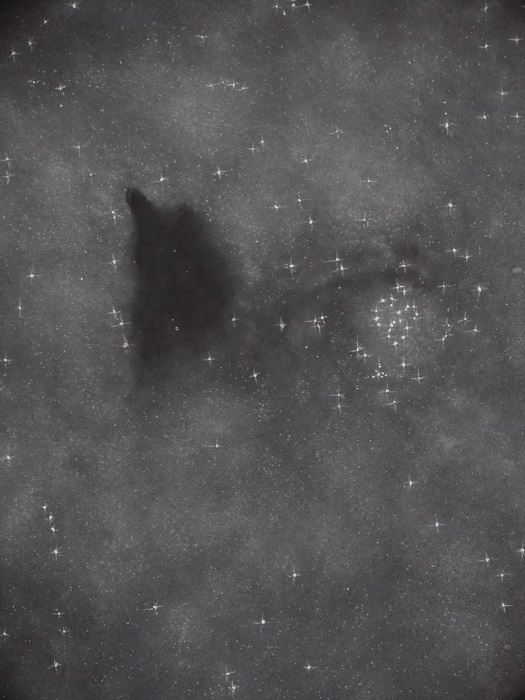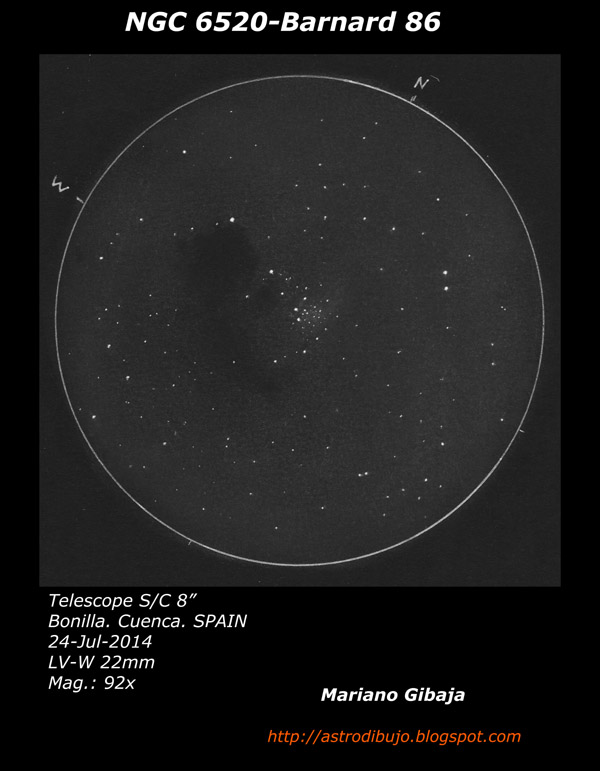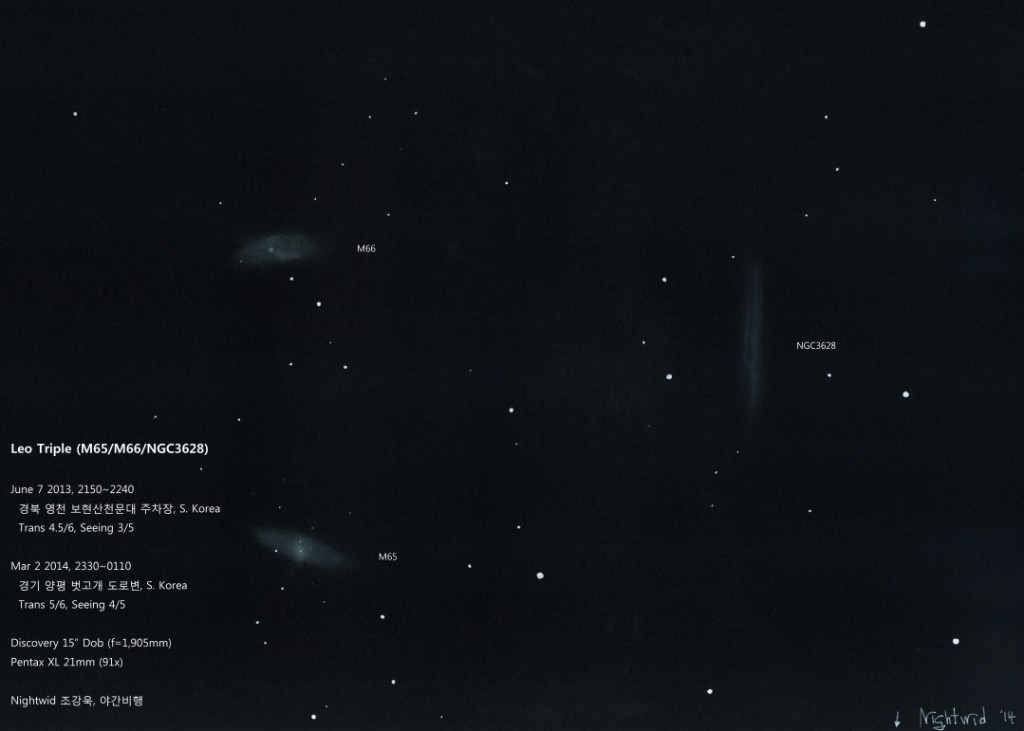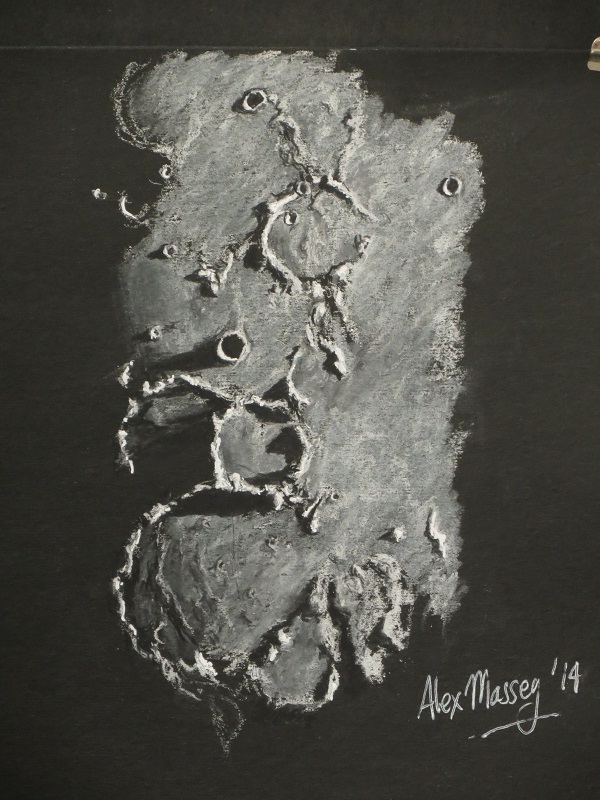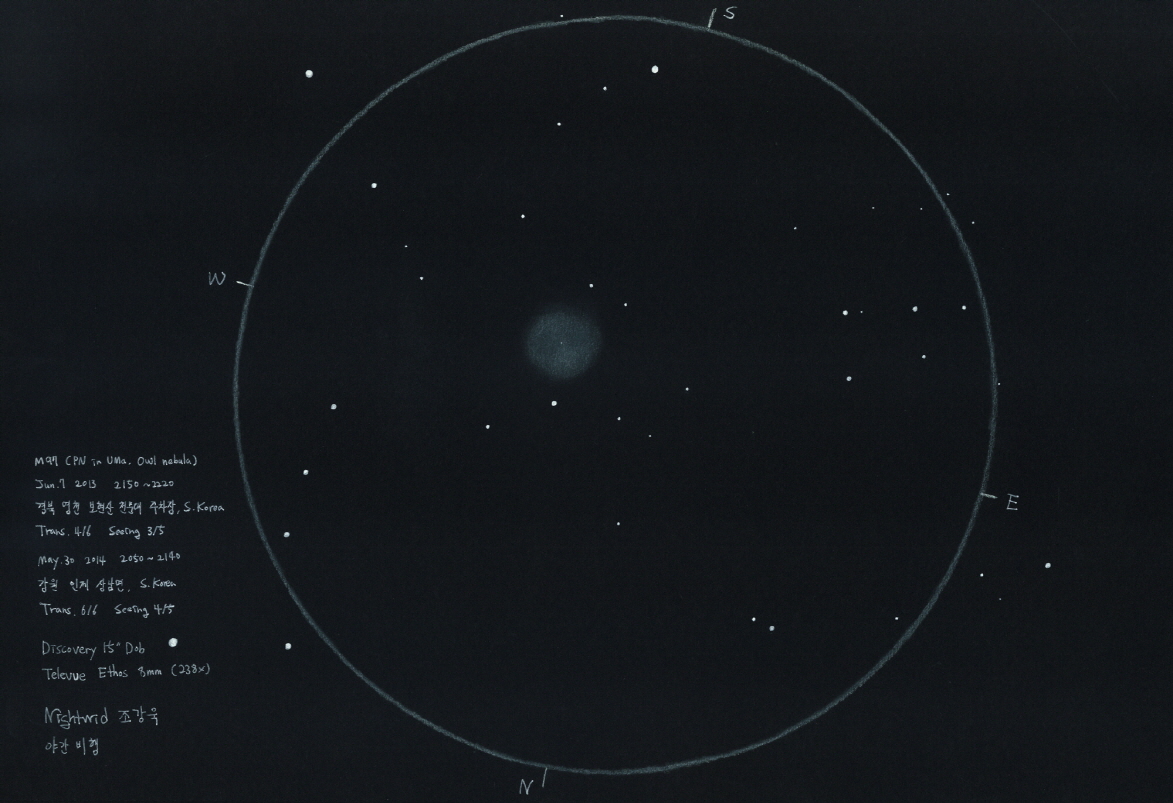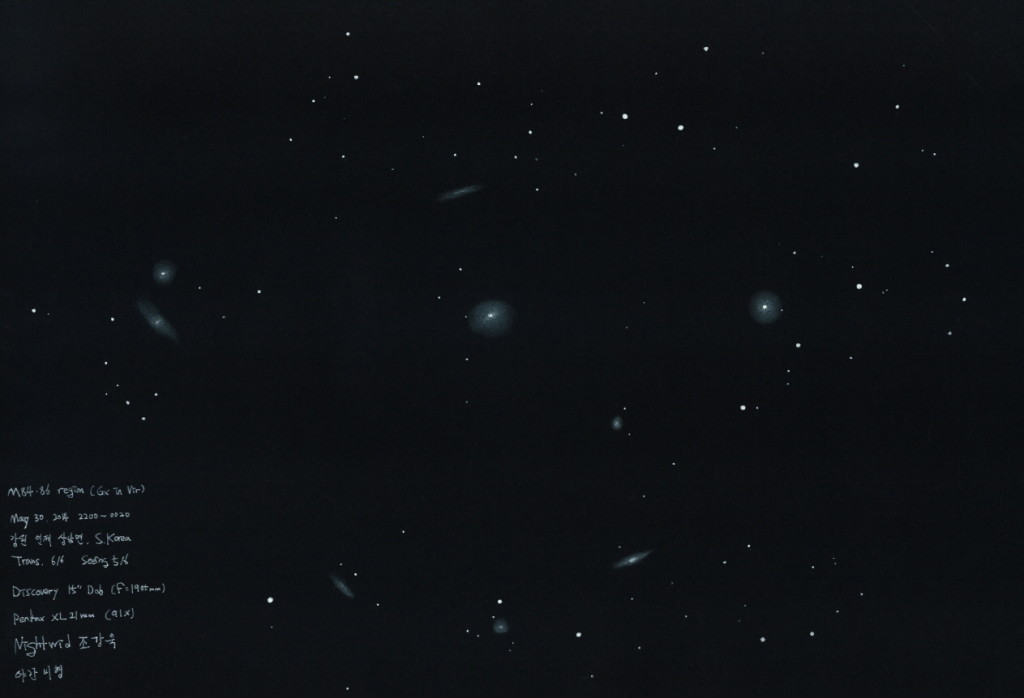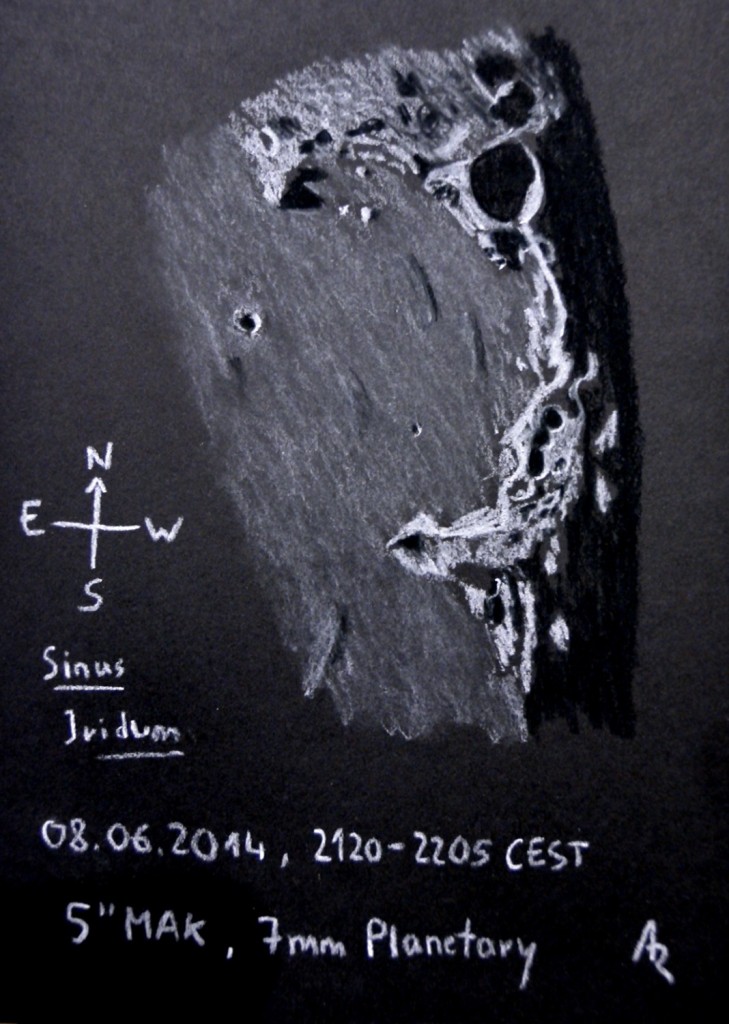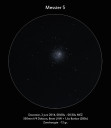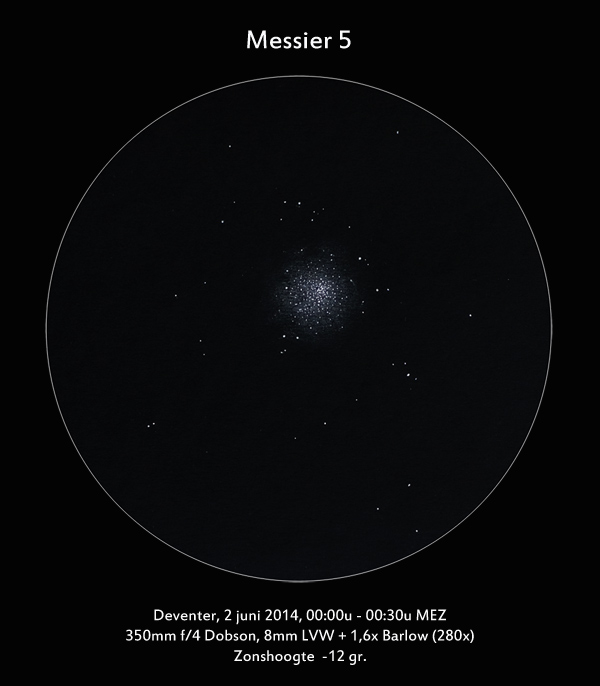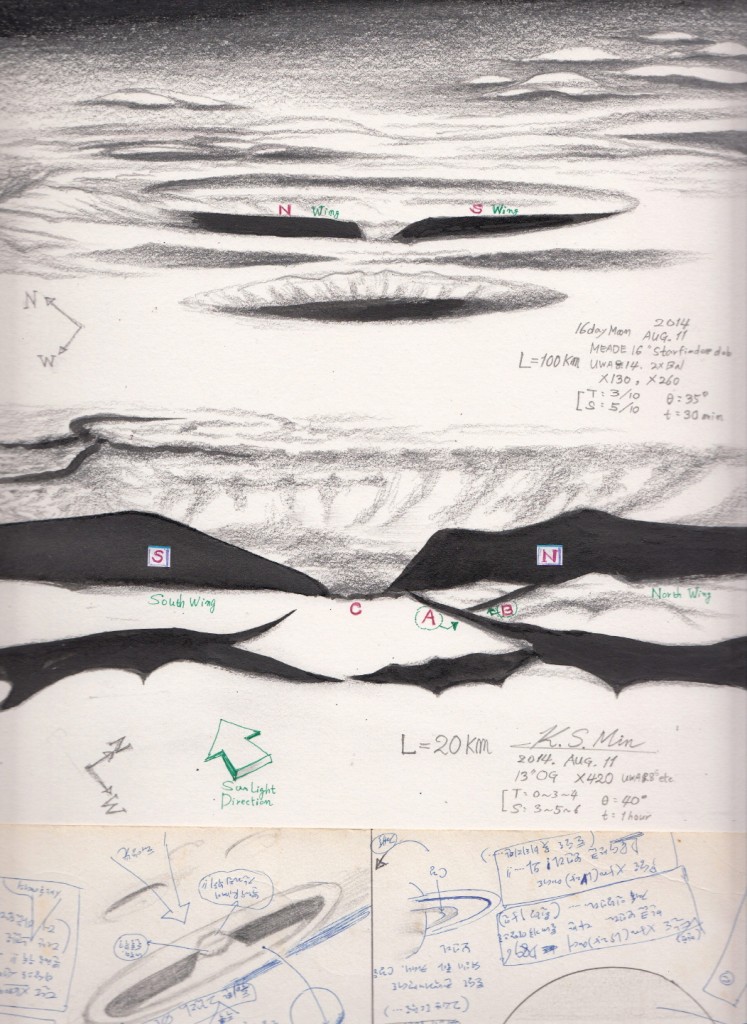
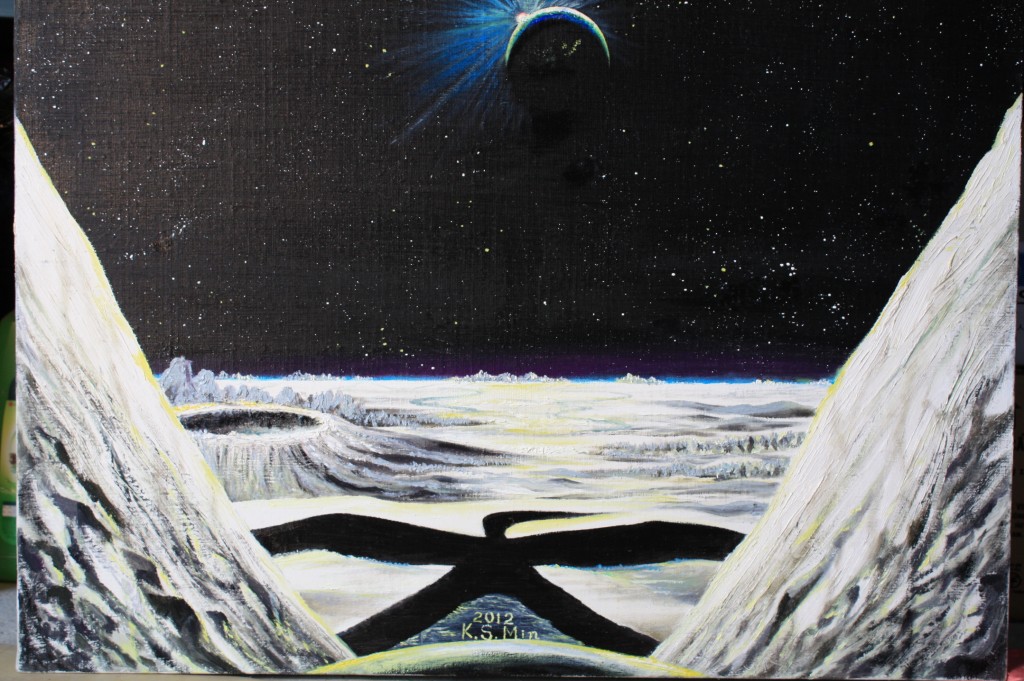
I hope,have to correct my previous ASOD posted that sketched on 11,11,2011 [ The Chevallier crater ] as to [The Zeno crater] ….. in the begining month of this year I found this name in Wiki and now most probably this split rimed crater,s name is maybe “Zeno” . The LRO photo shows a 5 km diameter criminal impactor crater vividly laid on the demolished and streamed down rim-wall that I think must be made of reratively soft weak meterial or even I think the small impactor crater was not ” the a criminal ” for this dramaticaly split rim of Zeno.
This 60km diameter crater is located near the Moon,s limb upper Mare Crisium and looked always long slender elliptical shape. For the first time I saw it accidentally with my 8″ dob on excelent seeing night on 10.25, 1999. Second time,with my 8″ refractor on 11.11,2011 , and now I have 10-12 night observations for this interesting crater.
The bottom in my sketch , a inserted 8″ dob,s old sketch shows a small convex hill between split rims of maybe over 2-4km height and that was sketched also as a more impactor crater like in my other 8″ og observations at more favorable librations but even yet where I did not certain whether it was the impactor crater or a massif hill ,barely visible.
The 16″ dob sketch shows the Zeno with it,s environs well, When starting 13″ og observing after 16″ dob , the shadow of the strong jet-stream flow over 20km upper atmosphere passed through on the lunar disc from north pole to south pole at a velocity per in every 0.1 second speed in the eyepices view for 15-20 minutes and strangely eyepiece seeing was ok . Still the interior environs between splited rims were not seen sharply but outer black sharp shadows were well seen, so, shadow [A] consistently 1 hour viewed on the other hand shadow [B] was not viewed for 40 minutes and unexpectedly suddenly appeared as a 2km long, 200m wide jet black shadow in the x420 84 * bino- eyepieces view . This [A] and [B] consist the two legs of the rushing out blackbird shape black shadow that I observed in other nights 1.5years ago.
Turn my eyes to the 500-600km long west lunar limb of Mare Orientale environs for a brief rest, I could see some 10-15 single mountains and 5-6 twin mountains which looked almost similarly but with less details than that I posted here 6,21, 2014. , untill soon after dark clouds stopped the night,s observation.
In recent several lunar observing night, I thought about why there exist no atmosphere molecules on the Moon,… It,s because of weak gravity, .. then from where and when the gravity begins or generates ?
Myself final answer yet…. it generated from in the body of the every a quark or a lepton as a form of “graviton particles” . Need more study.
—————-
Object; Zeno crater
Observe/ Sketch for 1.5 hours; AUG,11, 2014,
16″ dob, x130,x260, uwa14 #4000, 2x bal
13″ refractor, x 420, mostly uwa 8.8s #4000, binoviewer
tak abbe 6, 9mms, nagler 7mms
8″ dob (10,25,1999), x240, x480 , nagler4.8, 2x bal
Lunation ; all 16 -16.5 day
Location ; Backyard home in South Korea
A local made white paper [33 x25 cm] with pencils , black ink, and a old 1999 sketch was inserted
My oil painting 61x73cm imagened before I saw LRO photo of Zeno


